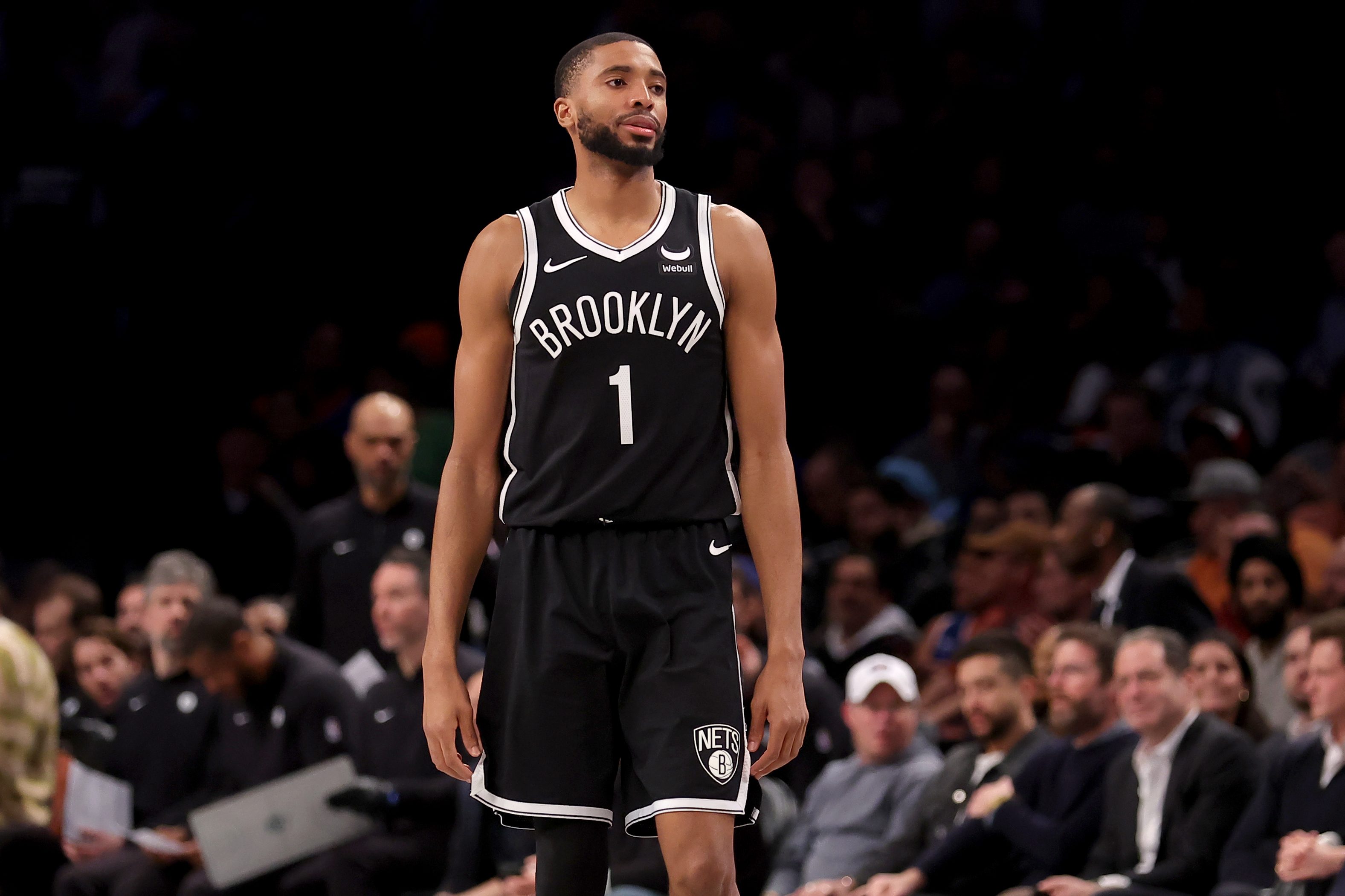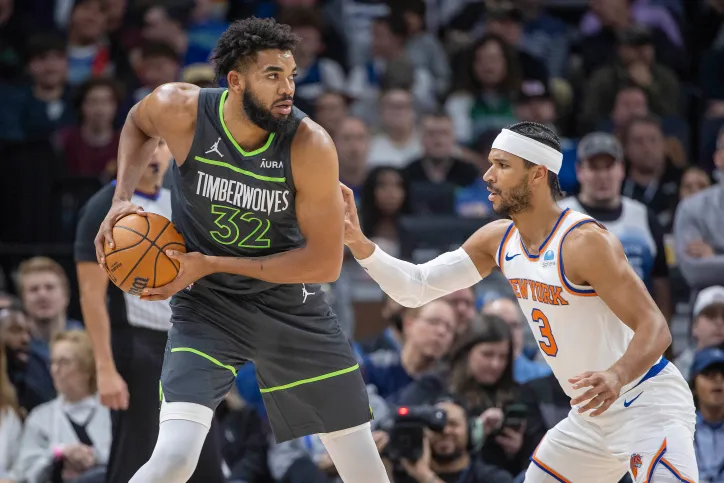
Before he was acquired by the New York Knicks, Mikal Bridges looked poised to become the face of the Brooklyn Nets’ franchise. The main piece of the Kevin Durant trade, the two-way wing averaged 26.1 points per game and looked like a star in the making, but things never materialized the way they were supposed to in his first full season with his brand-new team. Entering his age-28 season, Bridges has remained a good but not great player, someone that you almost question paying the price of four first-round picks for.
This season feels different for Mikal Bridges; there’s still plenty of excitement about his role on the Knicks, but not nearly the same hype regarding his upside. While he may never become the number one option on a playoff contender that some believed he could be, there’s still more room for him to grow, and his first year in New York could be the best of his career.
What the Knicks Can Learn From Mikal Bridges’ Failures in Brooklyn

Mikal Bridges had a 56% True Shooting%, the worst mark he posted in a season since his rookie year, and a sizable decrease from his 58.7% clip the year before. His three-point efficiency dipped, but it came with a near two-attempt increase in volume per game, so it’s not the most surprising thing in the world. His two-point percentage dramatically decreased, raising concerns about his shot selection and overall spacing around him.
The Nets did not surround Mikal Bridges with excellent playmakers or shot creators, as Spencer Dinwiddie and Dennis Schroeder led the team in assists per game but neither player spent the full year in Brooklyn. Cam Thomas was their leading scorer but he is a seriously limited contributor who doesn’t provide playmaking or defensive abilities that can complement Bridges’ skillset either.
With a lack of reliable playmaking around Mikal Bridges, he saw an immediate and dramatic decrease in assisted three-pointers.

Mikal Bridges is not the kind of shooter who excels at just pulling up at random, ranking in the 56th Percentile in 3PT Shot Creation and in the 50th Percentile in Pull-Up Talent per BBall Index. He’s much better when in a catch-and-shoot situation, as he was in the 61st Percentile in Shot Efficiency and the 82nd Percentile in Shooting Talent, and with Jalen Brunson being both an elite scorer who draws defensive attention and a capable passer, these two should benefit greatly from one another.
The specific area where I think Mikal Bridges will benefit is that the Knicks can run more sets where he can get to the corner and drain threes, as the Nets eliminated that from his repertoire.

Brooklyn struggled mightily to run offensive sets that would get Mikal Bridges the looks from three that he was used to getting in Phoenix when he was alongside a star scorer. While the Knicks don’t have a playmaker as transcendent as Chris Paul, they do have capable passers and more importantly, serious gravity thanks to the addition of Karl-Anthony Towns. The player I expect to benefit the most from that trade is Brunson naturally, but Bridges serves to greatly benefit from playing alongside an excellent shooting big as well.
The Knicks were dead last at stretching a defense and pulling rim protectors away from the basket, but the Brooklyn Nets weren’t much better in that regard. Brooklyn was among the worst seven teams in the league in that regard, and at 6’6 Mikal Bridges could be dangerous at the time. He attempted just 20 dunks this year, the lowest of his NBA career, and overall saw a massive decrease in shots taken right near the basket. Part of it is a greater reliance on being a perimeter scorer, but the other aspect of it is that the Nets didn’t have enough spacing to draw defenders away from the rim.
With KAT at the five for New York, defenses will have to decide between leaving one of the Knicks’ many dynamic shooters open or giving them a lane to the basket, making them nearly unguardable.

There’s more room for Mikal Bridges to break to the rim and take a high-percentage shot or get a clean catch-and-shoot opportunity, and his ability to put the ball on the floor or finish a play makes him extremely valuable to any offense. The Knicks are going to be able to utilize Bridges as a true Swiss army knife on that side of the basketball, and that’s not even mentioning just how impressive he is defensively.
He graded out in the 87th Percentile in Perimeter Isolation Defense and the 73rd Percentile in Post Defense, and while the defensive numbers last season weren’t as impressive as we’re used to seeing, OG Anunoby will help mitigate the matchup difficulty here. Instead of Bridges being the team’s best defender, he’s their second-best defender with a remarkable pedigree of locking up top defenders.
Mikal Bridges should just be a much more efficient player with the Knicks than he was with the Nets, the kind of player who could take a serious leap in this kind of system. While he’s back to being a third option, it’s not the same as it was when he was on the Suns. The Knicks had a player who they threw into the role of a versatile scorer who was tasked with being one of their top wing defenders, and that was RJ Barrett.

Things didn’t go the way the Knicks hoped for when they initially inked RJ Barrett to an extension, but the vision with him was clear. Jalen Brunson and Julius Randle would be the lead scorers while the Canadian-born wing would be able to get his touches and try to anchor the defense, but his lack of a consistent three-point shot and bad defensive play didn’t make him the right fit for the role.
He could find success with Toronto as more of an on-ball player, but Mikal Bridges might be the perfect player for the role that Leon Rose envisioned for the former third-overall pick. The Knicks can get 16-17 points per game out of Bridges while also getting one of the better defensive wings in the sport, the exact kind of player who could elevate this team to the NBA Finals.
